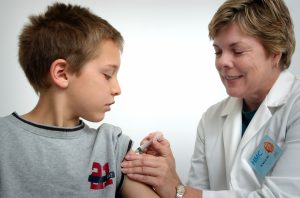
Plan for Healthy Dining
Written by Julie Alliger, Chester County Hospital
Smart choices make for healthier dining out.

Written by Julie Alliger, Chester County Hospital
Smart choices make for healthier dining out.

Written by Nicholas DiNubile, M.D.
Advice from Premier Orthopedics’ Dr. Nicholas DiNubile.

What local experts advise on vaccinations.

Written by Lori Handy, MD, MSCE, Children's Hospital of Philadelphia
The CDC’s latest guidance extends to children as young as 6 months.

Written by Diane Kudes, MD, Suburban Hospital
Kids are returning to school and playgrounds. So are childhood diseases.

Written by Raida M. Rabah, MD, infectious disease specialist at Penn Medicine Chester County Hospital
Covid isn’t all you should be vaccinated against.

Written by Raymond Carter, MD, clinical leader of the primary care practice at ChristianaCare’s Concord Health Center in Chadds Ford
You’ve got nothing to lose and everything to gain.
County Lines is the premier Monthly Guide to the best of Southeastern Pennsylvania and Northern Delaware with engaging editorial, compelling design and loyal readership. And have been for over 48 years! We bring you the best of Chester County and Beyond.